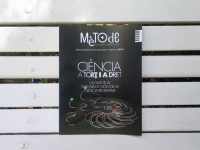In a world where it seems best to go unnoticed, many creatures display their beauty in plain sight. We could even say that we are surrounded by beauty. A diverse and overwhelming beauty that inspires artists and engineers, one that scientists have tried (and keep trying) to study and understand.
In this Metode monograph we will see how science has searched for the evolutionary causes of sexual beauty in the process of mate choice and self-perpetuation, necessarily adopting the point of view of each organism and studying how beauty is perceived species by species. As the famous phrase, attributed to various literary figures, reminds us, beauty is in the eye of the beholder.
The contributions to this monograph will focus on the senses, on sensory perception, and even more, on the communication and integration of this information by organisms endowed with a nervous system. The work presented here has two clear aspects. On the one hand, we approach sexual beauty, its causes and consequences in the animal world, and we find mechanistic and evolutionary explanations for it from different perspectives, including philosophical, sociological, ethological, and neurological points of view. With respect to the latter, it is recognised that the function of the nervous system is to create, maintain, and modify neural associations that ultimately enable survival and reproduction. But, in addition, the brain is also capable of appreciating qualities in perceived objects that provoke a feeling of pleasure or satisfaction. This is why we complete the monograph with reflections on the relationship between nature, beauty, and art.
How important is beauty in the choice between different options? How can we influence the perception of beauty? How reliable are the signs of beauty? What are the consequences of beauty standards for human society?





